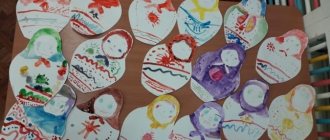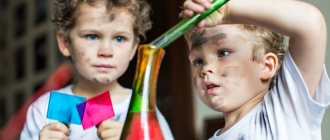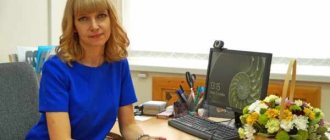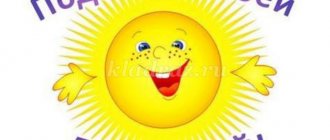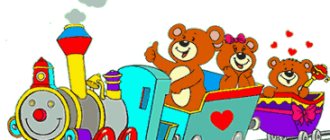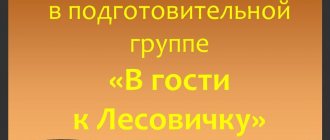What difficulties arise when compiling a self-analysis of a lesson?
Despite the fact that I have a younger group, the recommendations for writing self-analysis are common to everyone, so don’t be shy, take my work and use it for your health.
So, first, let's look at the mistakes that we all make when analyzing an event. When we begin the textual part of self-analysis, we get carried away with describing the process of the lesson, but forget to formulate the problem that we planned to solve through a specific lesson.
For example, you conducted a lesson on the topic “Vegetables” in a middle group or in any other group. What problems or tasks do we want to solve with this theme? After all, it’s not just that a lesson in kindergarten is planned, but with the goal of achieving something, isn’t it? This means you need to write, like, that there is a problem with the development of fine motor skills and vocabulary in children. Since these concepts are interrelated, during the lesson the problems will be solved comprehensively.
In general, the problems that we can put in the introductory part (preamble) of introspection are quite typical:
- Speech development;
- Development of fine motor skills;
- Activation of creative abilities;
- Improved communication;
- Socialization of children, etc.
It is better if the problem is consistent with the topic of self-education. And do not forget that the problems are also closely related to the age groups of children. For example, in a pre-school group, be sure to focus attention in posing problems on a topic that corresponds to the trends of modern school education.
In addition to posing the problem, educators often forget about the need to indicate the difficulties encountered during the lesson. It is believed that a good teacher cannot have any shortcomings in his work. But we all know that everyone has their own weaknesses, and the ability to highlight them is not an indicator of inexperience, but, on the contrary, demonstrates your objectivity in relation to yourself.
It also happens that the teacher is interested in statistics: the text is replete with numbers and percentages. But it’s better not to go too far with this. The structure of self-analysis does not presuppose dry statistics, but a clear presentation of the results of a study of the justification for using a particular technique when conducting a specific lesson.
Difficulties and questions
I have already raised this topic in the article “Self-analysis of a teacher: how to compose it correctly?”, but despite the presence of many methodological recommendations in the literature and the Internet, my colleagues, especially young ones, have difficulties in this matter. I've talked before about the general self-reflection that goes into a portfolio. And today I will write about self-assessment of any activity that is conducted in kindergarten.
It should be understood that such documents are like a professional autobiography, but not just listing reliable information about periods of life, but with an analysis of mistakes and achievements. A self-respecting teacher will make every effort not to submit a poorly compiled analysis of the work done to management for review.
If you ask a truly adequate methodologist what he or she wants to see as a self-analysis of the lesson, then I am sure he or she will answer the following: “I want to read a logically structured, competent, reasonable self-analysis, supported by specific facts.” Do you, colleagues, think I understand the requirements for this document correctly? Respond, dear teachers!
It is no secret that even experienced educators, who will carry out any event with a bang, when writing an analysis then stumble on the wording of sentences. I’m like that myself, although I have to write a lot of things both at work and on the blog. But here natural laziness helps me: in order not to do extra work every time, I worked hard once, but made a kind of matrix - a sample for myself and now I will share it with those who need help.
Let's look for answers on the Internet...
I will not change the established tradition - to make for you a selection of useful, in my opinion, books and manuals.
So, after searching in UchMag, I found something special:
A bestseller in popular psychological literature, a book by an outstanding woman – Karen Horney “The Psychology of Women”. The language of the book is relaxed, funny, the topic is relevant for representatives of the weaker sex, so to speak - how to overcome internal conflicts and how to recognize the psychotype of the people around you. In addition, the author publishes a unique technique - an example of personal introspection. I think this is a very interesting book that will be useful to any woman.
As for professional activities, I advise you to pay attention to the electronic manual “Performance Map of the Professional Activities of a Teaching Worker.” This is a CD with guidelines for creating self-reflections, portfolios, etc.
The printed manual “Self-analysis of the educational process: analytical activity, structure and content” is intended for heads of educational institutions to provide a scientifically based system of activity and management.
I understand that I haven’t presented you with many manuals on the issue of step-by-step compilation of self-analysis for a lesson, but I have already written and recommended thematic manuals on this topic several times, but I don’t want to repeat myself.
